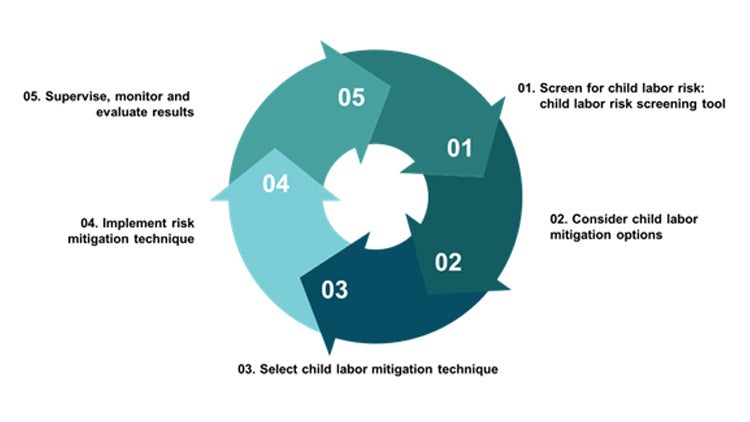 Child labor in Ghana
Child labor in Ghana
In 2021, the World Bank in Ghana conducted a portfolio risk assessment on child labor and learned that the high national prevalence of child labor, poses a challenge to operations. The World Bank in Ghana invests in sectors that have the potential to spur economic growth but that might also rely on child labor to sustain productivity. The situation is equally challenging in Sierra Leone and Liberia. In these countries, as in many other African countries, the involvement of children in economic activities is a strong cultural feature and is very common. While not all these activities are child labor as defined internationally and nationally, much of it is. The agricultural sector is one sector that carries high risk of child labor, but it is not the only sector.
In the context of this finding, the World Bank in Ghana has relied on the Environmental and Social Framework, especially the Environmental and Social Standard 2 on Labor and Working Conditions, as an entry point to prevent child labor in the workforce of projects. However, the World Bank in Ghana also realized that with such high prevalence rates, managing the risk in the project workforce might not be enough. This is especially the case if investments are made in high-risk sectors where there might be a risk for adverse unintended impact of investments. Child labor can for example be displaced to another sector, if the root causes of child labor are not addressed. To further guide teams in managing this risk, the Social Sustainability and Inclusion team of the World Bank Ghana developed a toolkit that describes a systematic approach and provides checklists, templates, and screening questions, to help projects manage child labor risk in the project cycle. Since November 2022, the World Bank in Ghana has worked to integrate this approach in several projects.
Mainstreaming child labor risk management in the project cycle
The modus operandi adopted by the World Bank in Ghana is a five-step approach that follows the project cycle. The first step is risk screening. One project that is under development has so far tested a child labor risk screening tool. This process helped categorize the project's risk level based on a non-subjective and systematic methodology, and indicated strategies and capacity building measures that could help reduce and manage the risk in the project. Through this process, it became clear that since Ghana is a decentralized country, social risk management mandates are spread across multiple actors operating at both national and decentralized levels. Managing the child labor risk in a high-risk project may therefore require measures to strengthen the capacity of decentralized actors and structures for these to be able to contribute to the prevention, monitoring, identification, and remediation of child labor cases at project sites.
Step-by-step approach to mainstreaming child labor risk management in the project cycle.

Grievance and redress cases involving child protection cases require collaboration with national child protection systems.
The pilot-exercise has also revealed the necessity of articulating clear linkages between project grievance mechanisms and grievance mechanisms established by employers, with national child protection systems, and the structures that exist at decentralized levels. Ghana has a clear Family Welfare and Child Protection Policy, that is led by the Ministry of Gender Children and Social Protection, with representation at district level in the form of District Departments of Social Welfare. Having clear description of the typology of child protection cases that GRMs might have to deal with, as well as streamlining reporting requirements and referral pathways with the requirements defined by Ghana’s Children’s Act (1998) and Inter-sectoral Standard Operating Procedures for Child Protection and Family Welfare is important to ensure appropriate remediation of potential child labor and child protection cases. In Sierra Leone and Liberia, similar systems and laws exist, and regulate the obligations to involve statutory child protection systems stakeholders, when it comes to cases involving child protection. In Sierra Leone, it is the Child Rights Act (2007) that defines child welfare and protection functions and mandates that should be taken into account in grievance cases and procedures. In Liberia, child protection, with implications for grievance cases and procedures is regulated in the Children Law (2011).
A key challenge, however, is that while the laws exist, the systems and the workforce that are needed to implement those are nascent and ill-equipped. The World Bank can make a difference in strengthening these, especially if a child labor lens is incorporated in substantial and high-risk projects when projects are designed.






Join the Conversation